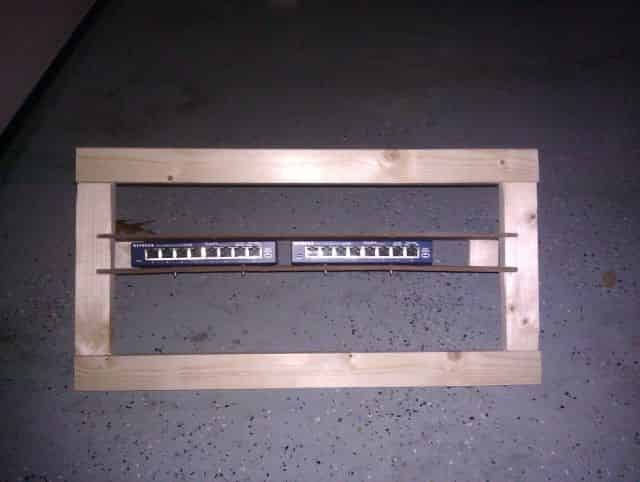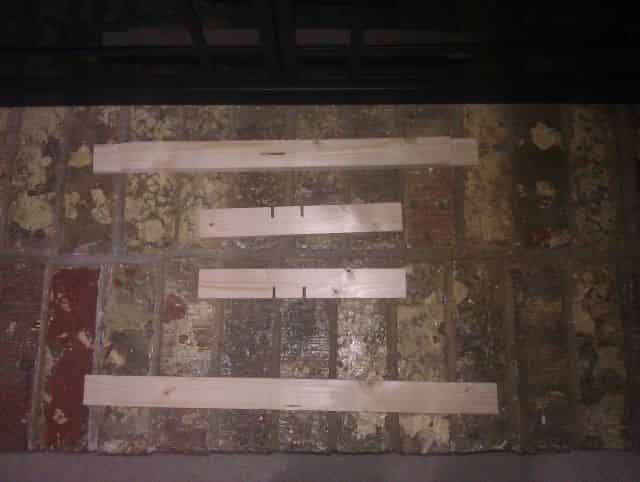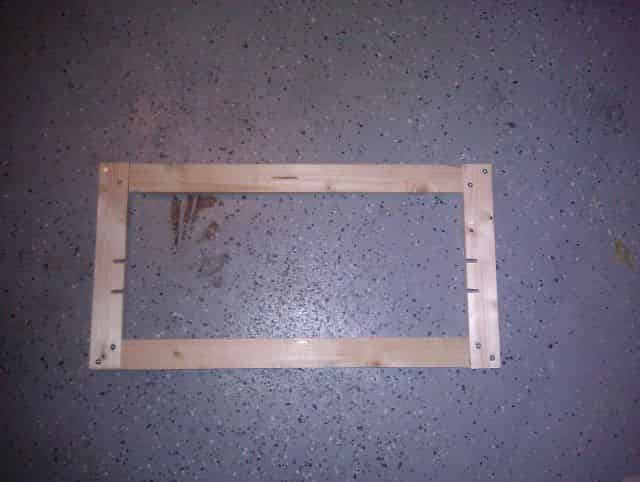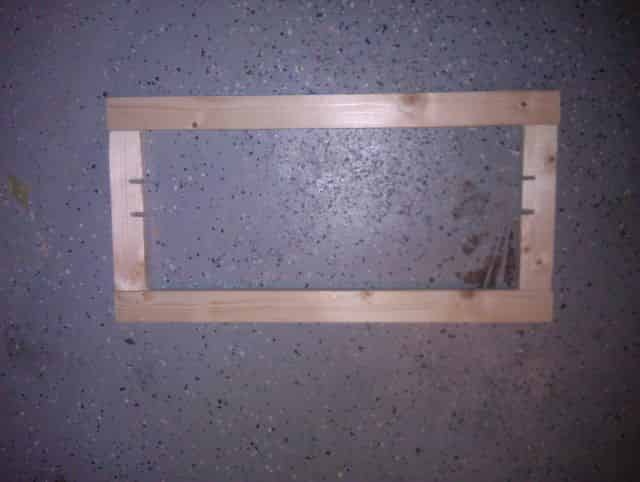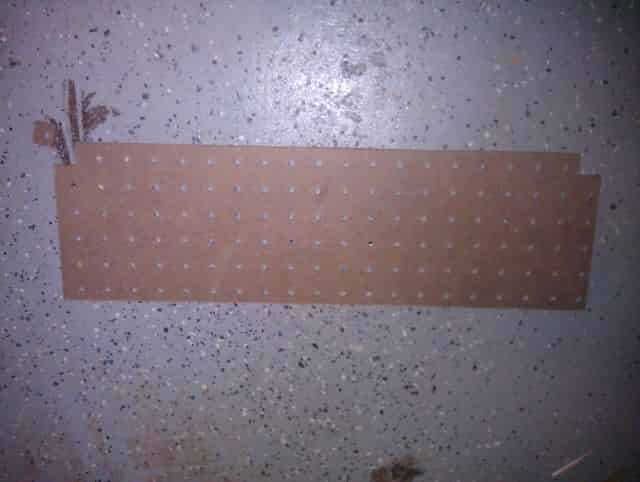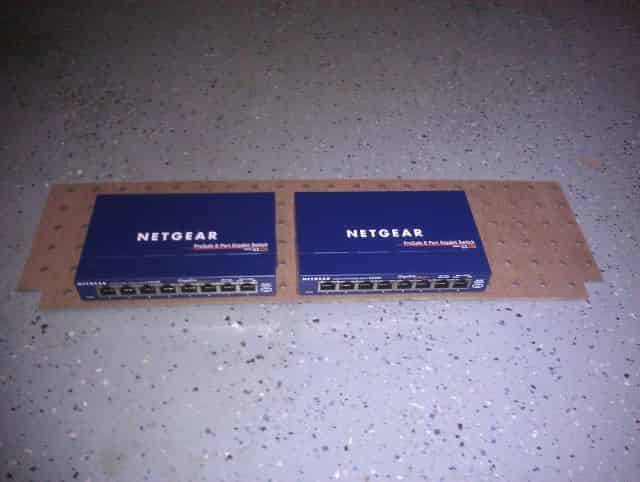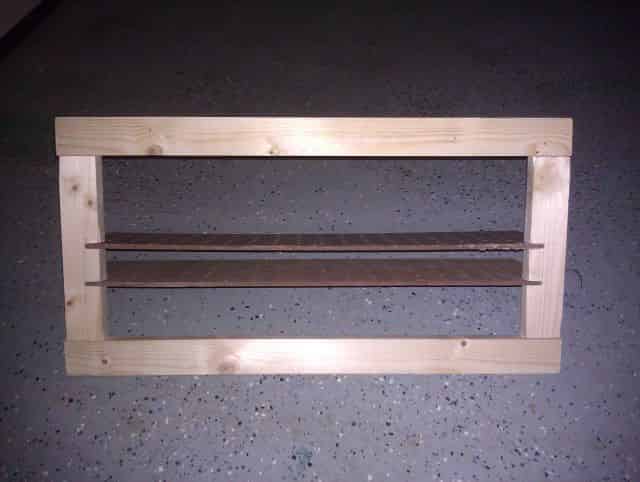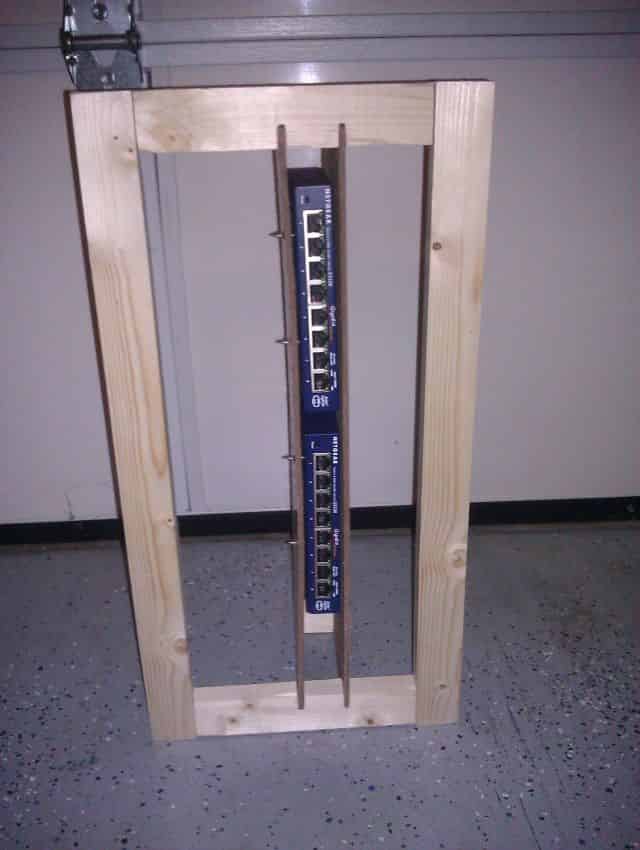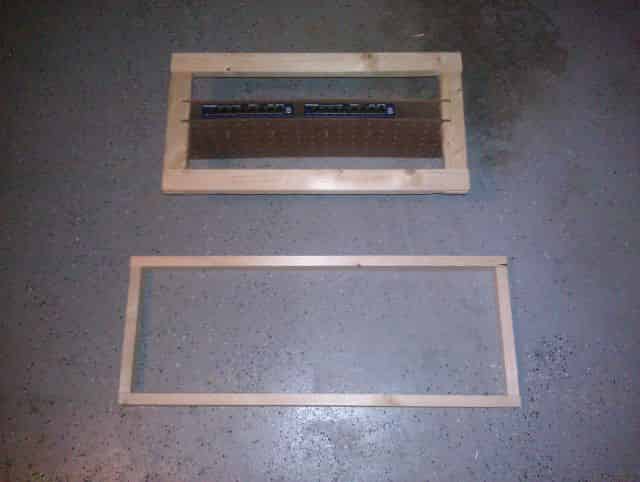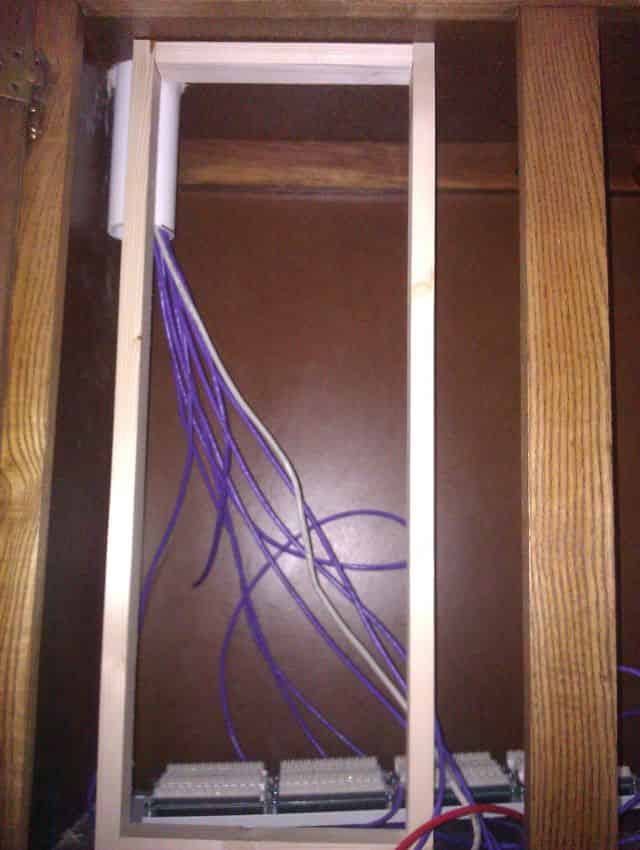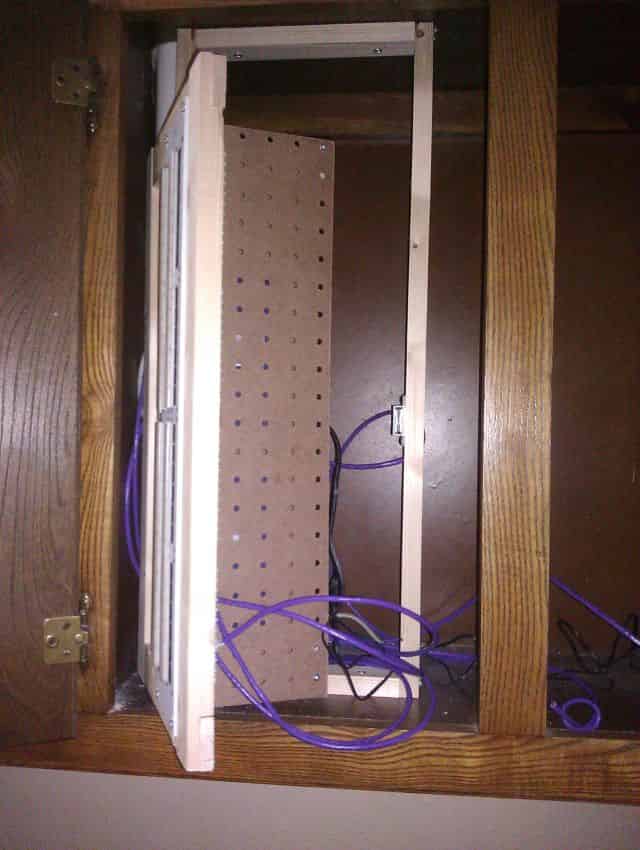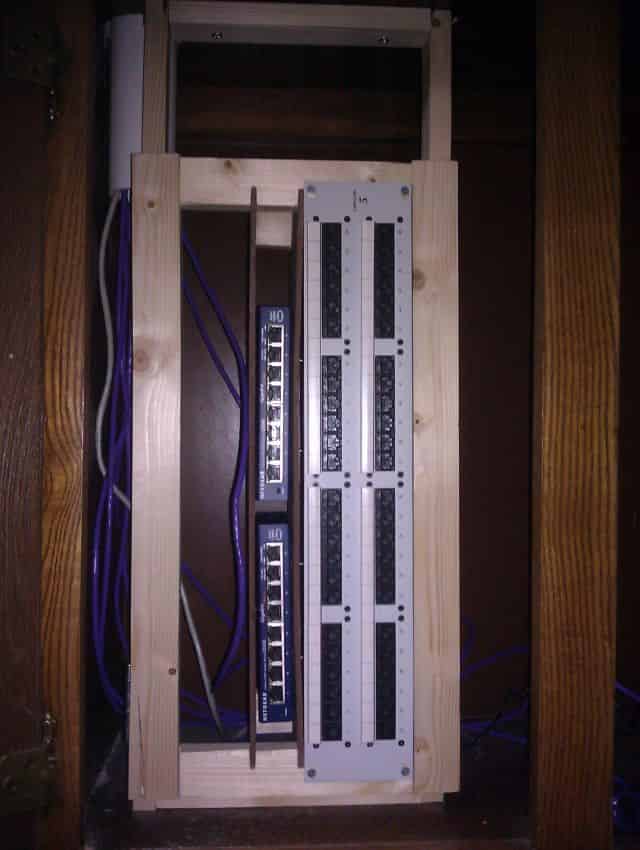Between the Holidays and the bacteria intent on ruining said Holidays, we wound up taking an extended break from My Network Cupboard. However, I made a resolution at the beginning of the New Year to see this project to completion and I am quite determined to keep at least one resolution in 2012.
Previously, we had measured out and cut what we called the equipment rack. The equipment rack would hold the patch panel, and then two “shelves” made out of peg board which we would mount the router to and then use to tie down cables and make everything neat. Then inside the cupboard, we would build out a wooden frame that we would mount the equipment rack to using some cupboard hinges and a magnetic clasp to hold it shut.
Today, we assembled the framing of the equipment rack and then we cut some notched pegboard that was six inches deep and ran the length of the equipment rack. The purposes of the notches in the pegboard are to help hold the shelf in place. At the back of the pegboard, we screwed in a couple stubby pieces to keep the shelves’ shape and to keep them study. Because the two pegboard shelves are installed within an inch of each other, I decided that we’d go ahead and mount the Netgear switches to one of the shelves.
Upon building out the equipment rack, we turned our attention to mounting a frame inside the cupboard that we would attach the hinges and magnetic clasp to. We wound up making the frame out of the excess 1”x2” lumber we had left over from the equipment rack. Our plan was to make the frame as tall as the inside of the cupboard and about the same width as the equipment rack. In order to install it we would screw the frame into the top and bottom of the cupboard.
Installing the wooden frame went surprising smoothly. We were worried that it’d go in crooked or that we would have a hard time with the amount of space available. The only complication ultimately was caused by my invaluable assistant, Pat. Pat was testing how sturdy the frame was, and he gently whacked it with the palm of his hand to see if it would move at all. Impressed with the sturdiness, Pat took a second hearty whack at it without the least bit of a budge. Then, inexplicably, Pat reared all the way back and smacked it a third time. Unfortunately, this time he put enough oomph into it that the vertical piece on the right side of the frame splintered and broke off. After a couple of “WTFs?!” and some laughter, we got out some longer screws and reattached the lumber. Finally some hinges and a magnetic clasp were attached to the cupboard’s wooden frame.
Finally, we attached the equipment rack to the other side of the hinges and guesstimated the appropriate location for the metal plate to hold the cupboard shut. We fed the patch panel, which already had a few of the previous cable runs punched down, through it’s hole in the equipment rack and mounted it too. We opened and closed the equipment rack a couple times to make sure we could access the back of the patch panel easily and we wrapped it up for a night.
The project is mostly complete, but there is still a bunch of more work left to do; there’s at least three more cable runs to do, we still need to relocate the Verizon FiOS router, the WiFi router will need to get moved to a central location, and there is a good deal of cable management work to do to clean up behind the equipment rack. Lastly, my least favorite thing to do after any kind of project… cleaning up all the mess I made. Hopefully, we can knock this out in the next week or so.

